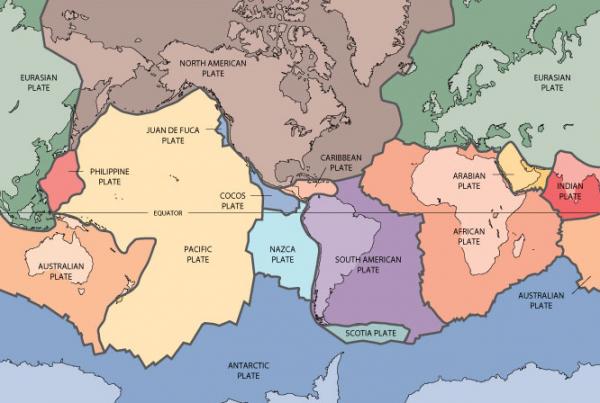Earth Began Recycling Crust 3 Billion Years Ago


A skin of continually new continental crust dominated Earth's surface until about 3 billion years ago, when the planet started recycling its surface, beginning the pattern of titanic clashes seen between continental plates today, scientists have found.
The points in time, rates and conditions under which Earth's continental crustbegan forming and evolving remain highly uncertain. Continental sediments can shed light on these pivotal events, so researchers investigated zircon minerals present in sediments from Australia, Eurasia, North America and South America, focusing on the isotopes within. (Isotopes are atoms of the same element with differing numbers of neutrons; different isotopes can come to dominant minerals under different conditions.)
The oxygen isotope composition of the zircons the researchers examined helped determine whether they come from newly formed crust that has been left undisturbed by Earth's tectonic churning or old, recycled crust. Newly formed crust would be more like the Earth's mantle layer, where oxygen-18 to oxygen-16 ratios are often found in a very narrow range. On the other hand, old, recycled crust has a much wider range of oxygen-18 to oxygen-16 ratios because of the influence of life and other factors, which can build up higher concentrations of one oxygen isotope over another.
"The new approach we developed based on the chemical information in the mineral zircon enables us to predict in a very accurate way the volume of continental crust that was present throughout Earth's evolution," researcher Bruno Dhuime, an isotope geochemist at the University of Bristol in England, told OurAmazingPlanet.
The researchers found that in the first 1.5 billion years or so of the Earth's history, the average net rate at which new continental crust formed remained high, at about 0.7 cubic miles (3 cubic kilometers) annually, enough to establish about 65 percent of the present-day volume of the crust by 3 billion years ago. However, after that, average net new crust growth slowed greatly to about a third of its prior rate as the proportion of crust that formed after being recycled through the mantle rose sharply.
"This sharp decrease in the growth rate about 3 billion years ago indicates a deep change in the way the continental crust was generated," Dhuime said.
These changes coincide with the start of plate tectonics. The continental and oceanic plates that make up the Earth's surface were solid enough to start colliding against each other, with some diving or subducting beneath others.
Get the world’s most fascinating discoveries delivered straight to your inbox.
"Our next challenge is to determine which tectonic regime shaped the Earth's crust back before 3 billion years in the Archean and Hadean eons," Dhuime said. "The scarcity of rocks older than 3 billion years preserved on Earth's surface may however constitute an obstacle in future research."
The scientists detailed their findings in the March 16 issue of the journal Science.



